Recent articles
-
Friday, June 3, 2011 - 5:23pm
-
Sunday, May 29, 2011 - 2:54pm
-
Friday, May 27, 2011 - 5:21pm
-
Thursday, May 26, 2011 - 9:07am
-
Monday, May 23, 2011 - 9:10am
-
Sunday, May 22, 2011 - 4:54pm
-
Friday, May 20, 2011 - 4:07pm
Recent comments
-
90 mph solar car makes Chevy Volt look tameIt sound a bit unrealistic ...Saturday, June 4, 2011 - 9:46am
-
Sprint putting money where its mouth is with phone buyback improvementsIt's a good initiative but at ...Saturday, June 4, 2011 - 3:30am
-
Solar cell in Apple iPhone 5, & next iPad may give Apple a leg upIf Apple decides to use the ...Saturday, June 4, 2011 - 3:22am
-
Mini’s electric scooter combines smartphone tech & sex appealElectric scooter are becoming ...Friday, June 3, 2011 - 3:11am
-
Barnes & Noble’s Nook hits Best Buy, new versions coming soonhopefully soon they will have ...Thursday, June 2, 2011 - 1:02pm
-
BMW chasing electric car mark with the BMW i, but it may be too slowBMW has given some good ...Thursday, June 2, 2011 - 2:54am
About Tainted Green
Why Tainted Green? Literally, green is only a color. But in typical human fashion we've pumped a cacophony of additional meanings and symbolism into the word. Green has become a marketing tool used by companies with impunity to wrap their products in a balmy haze of "ethical" and "conscientious" approval.
That's where Tainted Green steps in. We are seekers of truth, and we support the fundamental drivers behind the green movement. Ideas like permaculture, renewable energy, and recycling make sense, but companies that express support for green without a wholesome process behind it have tainted the meaning of green. And so, our focus is to create green content that pushes the ideology forward while pointing out which parts look like this year's marketing baggage. Welcome to Tainted Green, where we focus on unearthing the truth about green.

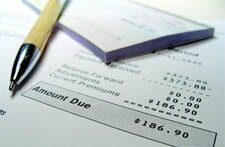
 You may have noticed in recent months that the coal industry has purchased a lot of ad time on cable networks. Many of them are running spots that tout coal as a clean and safe energy source that creates jobs. A group called “Coal Kills Kids” (CKK) is calling shenanigans on the dirty industry with their satiric site called “Coal Cares” that targets the world’s biggest coal company.
You may have noticed in recent months that the coal industry has purchased a lot of ad time on cable networks. Many of them are running spots that tout coal as a clean and safe energy source that creates jobs. A group called “Coal Kills Kids” (CKK) is calling shenanigans on the dirty industry with their satiric site called “Coal Cares” that targets the world’s biggest coal company. What do bone fragments, cow patties and banana peels have in common? They all help gardens grow. When processed into a charcoal-like substance called biochar instead of being burned directly for fuel, researchers say organic materials could offset as much as 12 percent of the world's greenhouse gases.
What do bone fragments, cow patties and banana peels have in common? They all help gardens grow. When processed into a charcoal-like substance called biochar instead of being burned directly for fuel, researchers say organic materials could offset as much as 12 percent of the world's greenhouse gases.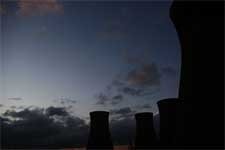 Independently, solar energy and clean coal have both been explored extensively with the hope of some day offering a viable, global alternative energy solution. What if turns out, however, that the solution wasn't in either one, but both, collectively?
Independently, solar energy and clean coal have both been explored extensively with the hope of some day offering a viable, global alternative energy solution. What if turns out, however, that the solution wasn't in either one, but both, collectively?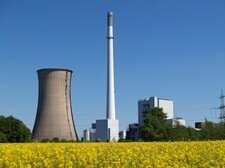 Half of the electric power in the United States is generated by coal, compared to 80% in China. India also has a growing appetite for electricity and right now coal is its cheapest solution. With so much of the world’s power centered on coal, any country that’s serious about reducing carbon emissions will need to renovate or replace coal power plants with something cleaner.
Half of the electric power in the United States is generated by coal, compared to 80% in China. India also has a growing appetite for electricity and right now coal is its cheapest solution. With so much of the world’s power centered on coal, any country that’s serious about reducing carbon emissions will need to renovate or replace coal power plants with something cleaner.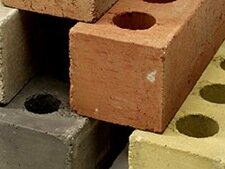 Fly ash is a nasty substance created during coal combustion. It used to be released into the atmosphere until someone realized putting things like chromium, boron, lead and mercury into the air isn’t necessarily such a good idea.
Fly ash is a nasty substance created during coal combustion. It used to be released into the atmosphere until someone realized putting things like chromium, boron, lead and mercury into the air isn’t necessarily such a good idea. China and the United States are huge energy consumers and right now a majority of that energy is generated by coal. An instant switch to renewable energy would certainly be the ideal solution but that isn’t realistic given the installed energy infrastructure and our current ability to harness power from renewable sources. Given that scenario clean coal begins to look a little bit like an OK temporary solution despite its roots that start with industry cash cows.
China and the United States are huge energy consumers and right now a majority of that energy is generated by coal. An instant switch to renewable energy would certainly be the ideal solution but that isn’t realistic given the installed energy infrastructure and our current ability to harness power from renewable sources. Given that scenario clean coal begins to look a little bit like an OK temporary solution despite its roots that start with industry cash cows. Controlling the carbon and chemicals produced by burning goal for energy is the basic premise behind clean coal, but its supporters are struggling to develop legitimacy. Critics have pointed out that pollutants like mercury that are released regularly into the environment and entire geological landscapes are altered from practices like strip mining. Now a forum in New York agrees that clean coal will require a lot more cash before it can become an effective countermeasure.
Controlling the carbon and chemicals produced by burning goal for energy is the basic premise behind clean coal, but its supporters are struggling to develop legitimacy. Critics have pointed out that pollutants like mercury that are released regularly into the environment and entire geological landscapes are altered from practices like strip mining. Now a forum in New York agrees that clean coal will require a lot more cash before it can become an effective countermeasure.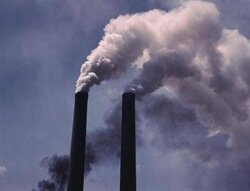 Coal companies obviously have a rock solid source of income, and it’s fueled by steady demand from a worldwide energy-consuming population. With resources like that it might make sense for them to invest in methods to reduce their negative impact on the environment, but instead they’ve decided to pump millions of dollars into an abject marketing campaign. Realizing the potential for bad publicity, the coal industry has formed the American Coalition for Clean Coal Electricity (ACCCE) to do its dirty work.
Coal companies obviously have a rock solid source of income, and it’s fueled by steady demand from a worldwide energy-consuming population. With resources like that it might make sense for them to invest in methods to reduce their negative impact on the environment, but instead they’ve decided to pump millions of dollars into an abject marketing campaign. Realizing the potential for bad publicity, the coal industry has formed the American Coalition for Clean Coal Electricity (ACCCE) to do its dirty work.